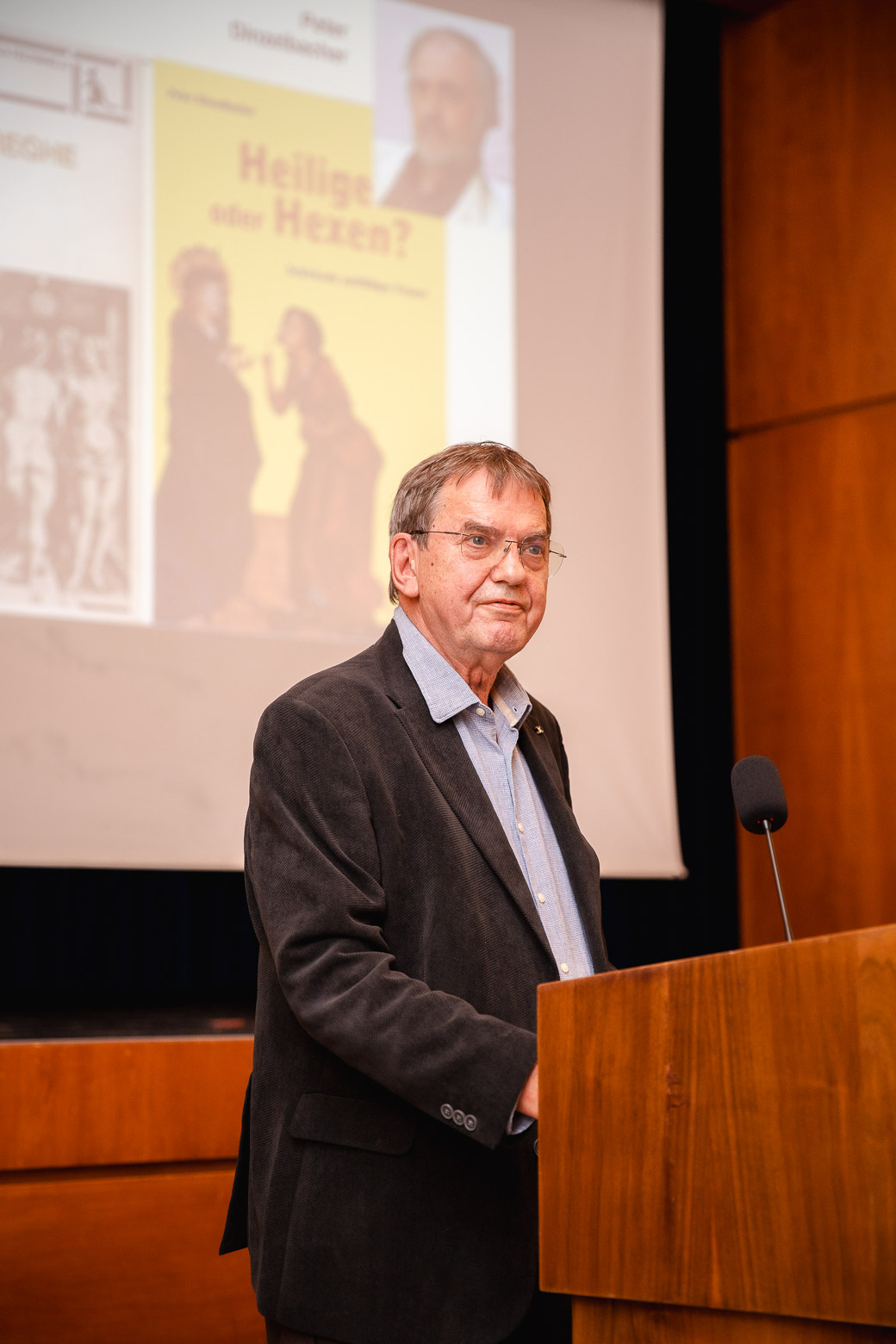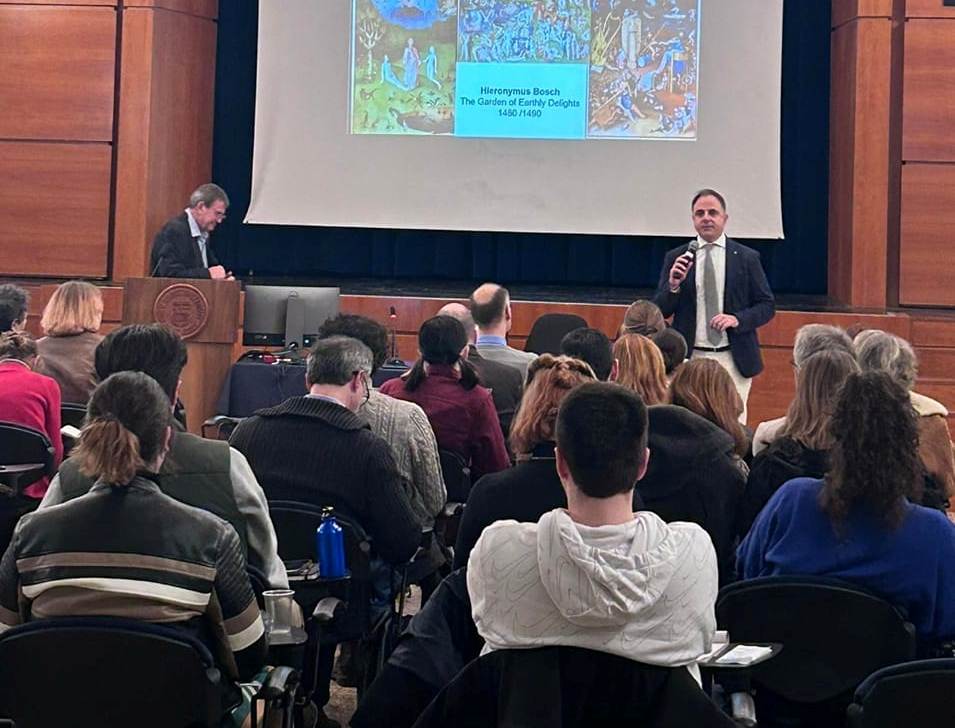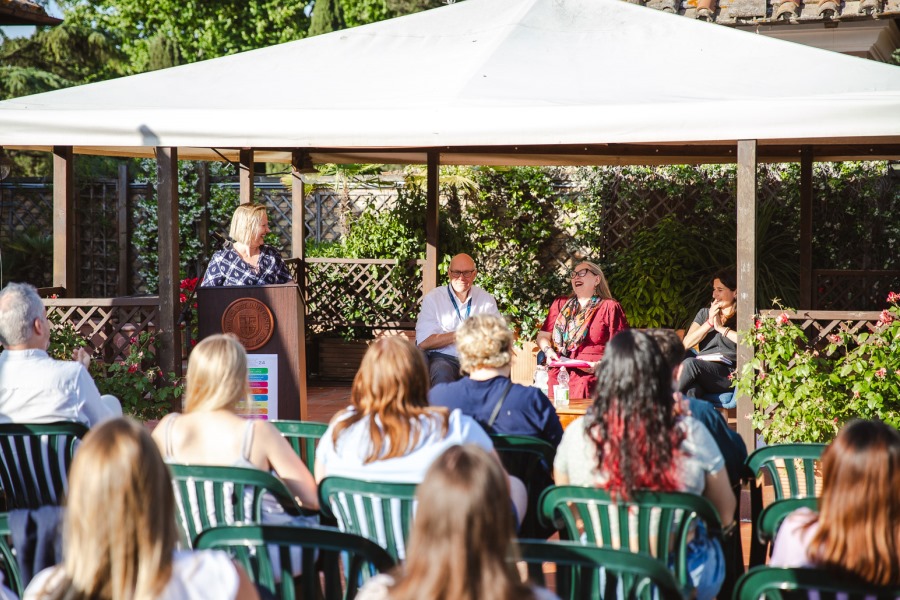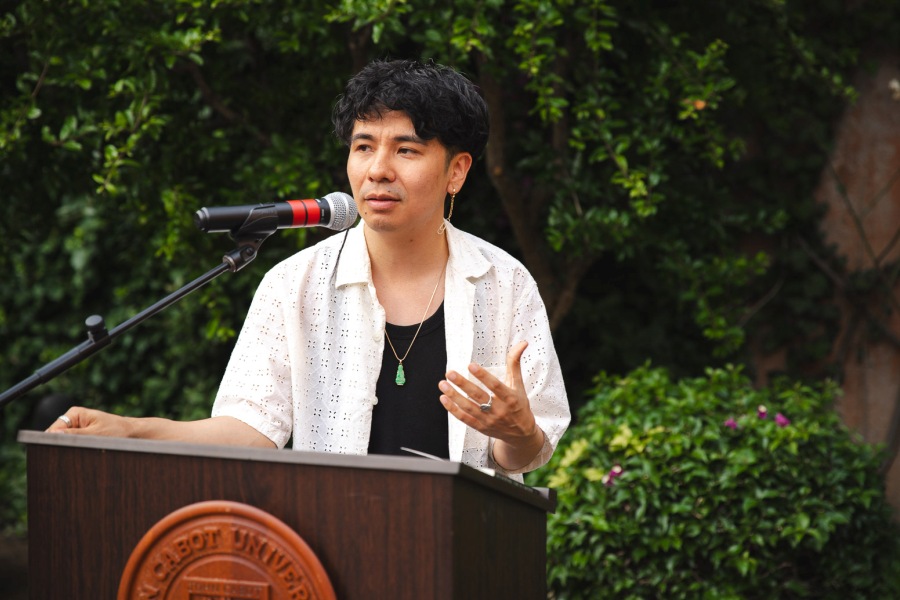JCU Welcomes Professor Gábor Klaniczay (CEU) for a Talk on Sainthood and Witchcraft
On January 23, Professor Gábor Klaniczay from the Central European University in Budapest/Vienna, gave a lecture at JCU entitled “Sainthood and Witchcraft in Medieval and Early Modern Europe: Two sides of the same coin?” The lecture was organized by Professor Fabrizio Conti and sponsored by the Department of History and Humanities, and the Office of the President.
Through his expertise in historical anthropology, Klaniczay delved into the intricate intersections that exist between sainthood and witchcraft. His approach challenges traditional dichotomies and situates the delicate historiographical issue of the relationship between the supernatural and pre-modern society on a comparative level, proposing a reinterpretation of the relationship between opposing conceptual categories, such as those of sainthood and witchcraft, on the basis not only of oppositions, but also of possible assonances in which saints and witches end up being two sides of the same coin.

Klaniczay explained how his interest in the relationship between saints and witches arose in the more general context of the creation and spread of popular beliefs. It is clear, he explained, that in virtually every society there are beliefs and ideas about positive powers as well as negative ones, and that the two are linked. A key starting point for Klaniczay was his participation in joint research projects with ethnographers and folklorists, especially the challenge of interweaving historical and anthropological methodologies. In particular, the anthropologists’ research on African and American witchcraft, based on different methodologies from that of traditional historiography or ethnography, aimed at understanding phenomena that had previously been considered completely irrational.
We all condemn this abject page of European history centered on witch hunts, in which especially from the 15th to the 17th century thousands of people, in particular women, were put to death as it was believed that they could commit horrible things. But from a historical point of view, says Klaniczay, we have a duty to understand and explain how this could have happened. One can see, then, according to Klaniczay, how behind such events there is actually a rationality that attempts to give a recognizable form to phenomena otherwise difficult to explain by resorting to models embedded in the culture of the time. Certainly, it is much more difficult to explain the recourse to negative models, such as that of witchcraft, than to understand why certain people were viewed so positively as to be venerated as saints.
In tracing these cultural structures and their possible interpretations, Klaniczay pointed out the possible similarities between seemingly opposing interpretative models such as those of sainthood and witchcraft. Ideas of transcendence and the supernatural guide both. After all, miracles transcends the laws of nature, just as the maleficium or evil spell does: the latter can be seen as nothing more than a kind of negative or reverse miracle through which instead of producing positive actions one sought to cause harm, and instead of healing one made ill. It could often happen that saints healed the bewitched and witches became the saints’ rivals. Saints are seen as servants of God and witches of Satan. It is a religious system at the basis of which lies a series of oppositions that form the background to the development of popular beliefs.

In this series of oppositions, which become typological parallels creating inverted correspondences, one finds elements that characterize saints and witches, such as their definition respectively as brides of Christ/demon lovers, or of the saint’s making a betrothal with a ring in opposition to the witch’s pact with the devil, or the ability to receive stigmata for saints and to have the devil’s mark for witches. Other examples include the ability to go into ecstasy for some saints (especially the mystics) as opposed to the trance of witches, as well as the levitation of saints and the night flight of witches, and again the heavenly visions of saints and the devilish visions of witches, or the divine possession as opposed to the devil’s possession for saints and witches respectively.
Even the process through which a saint or a witch is ‘created’ offers itself to an interesting typological analysis in which a series of oppositions establish a relationship capable of creating meaning. Thus, Klaniczay explains, if the canonization process is what makes an individual officially a saint, the witch trial officially condemns someone as a witch. It starts with ‘fama sanctitatis‘ in the case of the saint, and bad reputation for the witch, and witnesses are needed in both cases: in the case of saints we have notary documentation and in the case of witches, judicial documentation. Then two specific literary genres develop in both cases, with hagiography in the case of sanctity and demonology in the case of witchcraft. Again, with canonization and condemnation there is respectively the declaration of sanctity and guilt of the individual, and finally, the elevation of the relics and the preservation of the bodily remains of the saint pair with the burning of the witch and the dispersion of its ashes.

By also providing a very rich historiographical excursus on both witchcraft and sainthood, Klaniczay represented a very rich and colorful picture of a field of study that connects specialists from various disciplines, primarily, but not only, historians and anthropologists, along with many others, such as social scientists, art historians, climatologists, etc., explaining how the shaping of the identity of the saint and the witch represents an important and fascinating page of European cultural history. It is a history that transcends not only geographic and chronological boundaries, but also disciplinary and ideological ones to reach the core of the process of stereotype formation at the level of western civilization.
Gábor Klaniczay is a professor at the Department of Medieval Studies, Central European University, Budapest/Vienna and a research affiliate at the CEU Democracy Institute, Budapest. He is member of the American Academy of Arts and Sciences, the Medieval Academy of America, and the Academie des Inscriptions et Belles Lettres, Paris. He also served as Rector of Collegium Budapest – Institute for Advanced Study, between 1997 and 2002. He is one of the world’s leading historians of medieval studies. He is the author and editor of over 250 articles and books on a wide range of subjects in the field of medieval religion, popular practices, and society as well as historical anthropology of European Christendom (sainthood, visions, magic, and witchcraft). He also wrote on the comparative history of dynastic cults in Hungary and Central Europe, and the modern uses of the Middle Ages. Klaniczay is also an academic organizer fostering international cooperation, motivating students and scholars from all over Europe to transcend isolated national scholarly traditions, and also bringing American and European scholars together on many projects.





